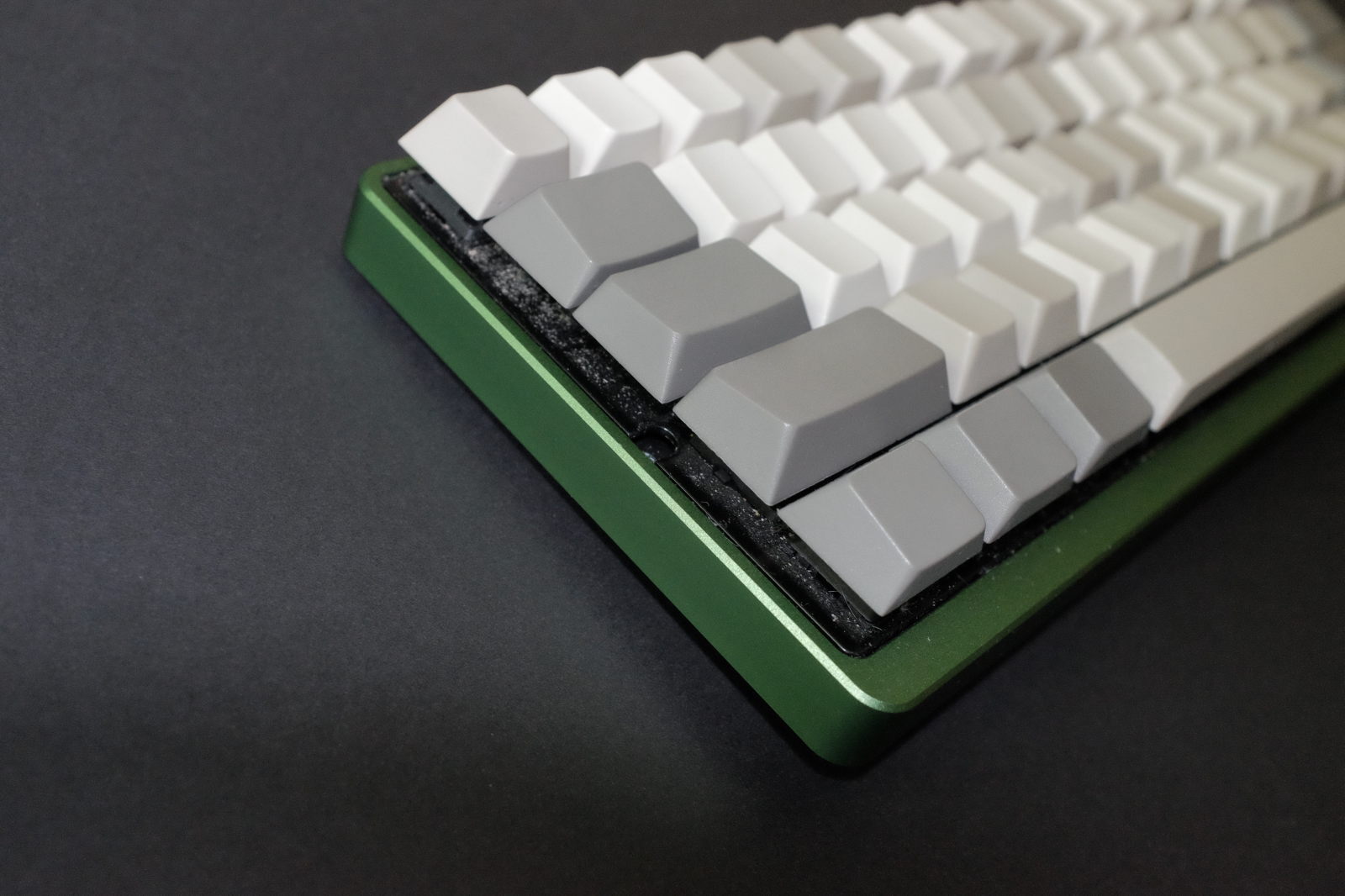ergo shift-dh
the flashed layout Colemak Shift-DH introduced left/right hand diagonal fingering symmetry which alleviates the left hand wrist twist of most keyboard layouts.
Lately, I have been playing with optimizing the keyboard experience by changing the keycap orientation and layout to minimize finger movement and improve hand position even more!
Three things were done to my original Poker 2 fitted with Cherry profile keycaps and my Colemak Shift-DH layout..
- The R2 row was replaced by R4 row keycaps, rotated 180 degrees
- Similarly, the top R1 row is rotated 180 degrees
- The left hand position is shifted back out one key to the left (as in a typical layout) with my Colemak Shift-DH layout equal, minus, slash and backslash keys moved the vacated row positions
The key rotation of the Cherry profile keycaps effectively forms a concave side profile to the keyboard, further minimizing finger reach. It is very noticeable. Using blank keycaps makes this very easy to implement. If you are short R4 keycaps, you can swap the R2 keycaps with the R4 row instead for a close approximation.
This results in a keyboard profile, top to bottom, with..
- Rotated R1
- Rotated R4
- R3
- R4 (or swapped R2)
- Rotated R4 (space bar and modifier keys)

My space bar row already had the keycaps rotated 180 degrees. This most notibly improves thumb contact feel.
The shifting of the left side special characters, while losing easy pinky finger reach, further separates the left hand from the right. It is only an additional 1U key width separation but again, is a very noticeable improvement in hand and arm positioning. It does impose an index finger stretch to reach the special characters but their low frequency usage offsets the inconvenience—whilst gaining pinky key access to my more frequently used Esc key.
`~ 1 2 3 4 5 6 7 8 9 0 = [ ]
Esc Q W F P B - J L U Y ; ‘ Del
Tab A R S T G / M N E I O Enter
Shift X C D V Z \ K H , . Shift
Ctrl Win Alt Space Backspace Fn Pn Ctrl
with Fn (thumb) held down..
^ F1 F2 F3 F4 F5 F6 F7 F8 F9 F10 F11 F12 PgUp
* 7 8 9 R T Y U I O Home Up End PgDn
CapsLock 4 5 6 F G H J K L Left Down Right
0 1 2 3 V B N M , . / Shift
Ctrl Win . Space Alt Fn Pn Ctrl
with Pn held down..
` Esc 1 2 3 4 5 6 7 8 9 0 - = Backspace
Tab Q W E R T Y U I O P [ ] `
CapsLock A S D F G H J K L ; ' Enter
Shift Z X C V B N M , . / Shift
Ctrl Win Alt Space Alt Fn Pn `~
Refer to the GuiFn guide for the navigation cluster assignments.
ergonomics
not so strangely, is also somewhat subjective, not merely physics.
After several days of typing with the layout above, I found the index finger stretch for the special characters felt more strained than the former pinky finger stretch to the Esc, Tab and backslash characters of my original Colemak Shift-DH layout—that and the persistent pinky reach in particular for the hyphen and slash characters.
Leaving the number row in its usual positioning with the relocated equal sign, though, was easily adapted to and, in fact, even feels better to me—aided by the particular color coding of my blank keycaps which now highlights the equal key—probably because I was never a proficient number row typist (which should be rectified with my new Planck keyboard and the use of keyboard layers).
So, until my second Planck kit arrives, this is the latest hybridized layout I prefer..
`~ 1 2 3 4 5 6 7 8 9 0 = [ ]
Esc - Q W F P B J L U Y ; ‘ Del
Tab / A R S T G M N E I O Enter
\ Shift X C D V Z K H , . Shift
Ctrl Win Alt Space Backspace Fn Pn Ctrl